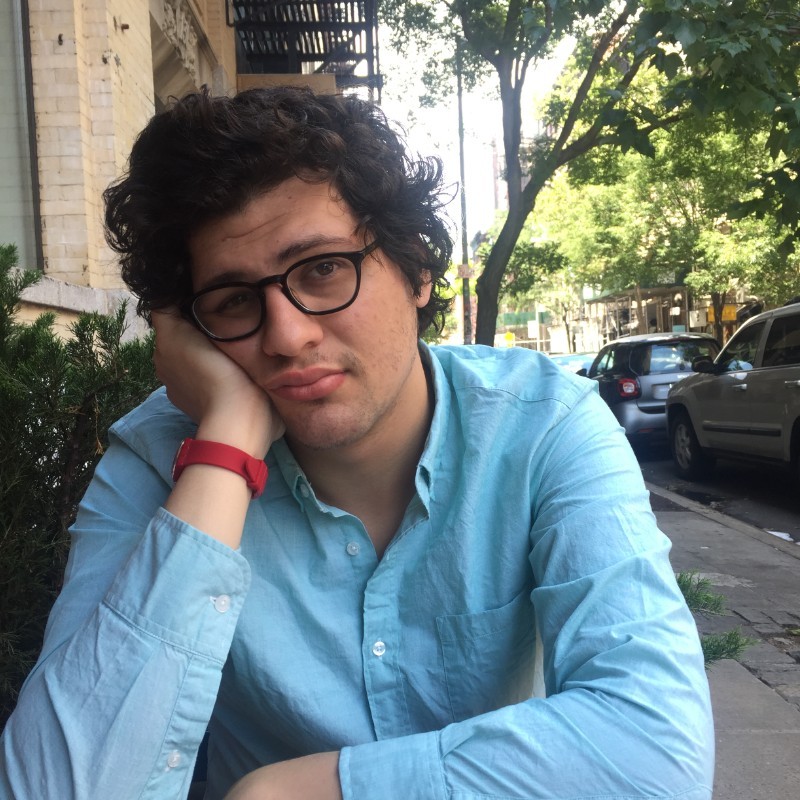“Death is uncomfortable,” Korakrit Arunanondchai says at some point in the thirty-minute short movie that’s playing on a loop at his latest show at C L E A R I N G (396 Johnson Ave). The observation isn’t particularly profound, but it poses questions that are. Namely: for whom – the dead or the rest of us?
Arunanondchai, a Bangkok artist who has likened his video art to sculpture, has death on his mind and he approaches it with the deliberation of a craftsman – “polyphonically,” as the gallery puts it.
The short – “Songs for Dying” – plays at the end of a cavernous room that is populated by three grim, silver benches which collectively bring to mind fossils or a grouping of enormous bones, perhaps more so because of the compressed earth they sit on. This is hardly noticeable unless you try to sit on it and then you are suddenly on the earth, which might be the point.
The movie makes up the final third of three works, or songs (as he calls them), that collectively make up “3 Songs,” a darkly-lit meditation on death that spans three rooms and that sits, largely undisturbed, in the gallery until the end of October.
“The coffin entered the flaming box/The morning after, coral-like bones rest on the table top/While the monk sings, the bones return to the bottom of the ocean,” a three line poem reads on the press releases, printed and provided in a quiet stack beside the gallery’s glass door, which is taped over to keep out the light.


The search for meaning in death on scale feels resonant, at least on some level, in the continuing mist of a pandemic that has killed one in 500 people in the country so far. The oblique qualities in Arunanondchai’s work lets that search break free from the fundamental awkwardness involved in mass scale grief, which otherwise rings hollow inside structures of capital that are built for buying things, not losing them.
Arunanondchai uses political narratives to outfit these personal experience: “Songs for Dying” contains both a stirring montage on morbidity – collaging clips of loss to the tune of a techno record by Japanese sound designer Koichi Shimizu – as well an extended conversation with his late grandfather, whose death inspired the show.
In the three canvases that illuminate another room – inkjet reproductions of collages that glow brightly with an implacable warmth – Arunanondchai has arranged flowers he collected from the funeral and has given these names like “In the wind I can hear my ancestors singing” and “A ghost takes me by the hand.” The trio of pieces surround another one, which hangs from the wall and glitters. It’s a costume that Arunanondchai designed himself; metallic foil layered on bleached denim that hangs corpse-like, or like a guide who has already departed.
The empty space that otherwise engulfs the room in lieu of more figurative work draws attention to Arunanondchai’s absence; a prominent visual artist, his previous hit short – called “with history in a room filled with people with funny names” – was slated to play at the Whitney Biennial before he withdrew it to protest the museum’s connection to the tear gas industry.
Previously, he had worked out of a studio in Ridgewood, but he’s gone from there too, leaving the United States behind for Thailand at the beginning of the pandemic. While some of this work has already been shown at the Gwangju Biennial earlier this year, what’s collected here feels like remains left behind after that departure, a scattered collection of ideas frozen in space that can be viewed with an almost assured privacy during most days of the week. Striking a confident tone, the gallery refers to death as a threshold “of heightened consciousness.”
The movie itself is arguably anchored by neither his grandfather’s death nor the eventuality of our own, but by a recounting of a 1948 massacre on Jeju island, where between 14,000 and 40,000 people were executed by the American-backed South Korean Army. In one of the war crimes that Arunanondchai selects, the Korean soldiers are seen pouring poison gas into a cave where civilians are hiding and while they execute any who try to escape. In a ceremony that Arunanondchai shot during the pandemic, a shaman is seen blessing a field of graves, erected in a recent attempt to publicly mourn the dead of this event, though the bodies of many have never been found.
“Let us now prepare for death,” Arunanondchai later instructs. In a show about death, this is when the dark, empty gallery space – filled only with the sound of Arunanondchai’s voice – gets spookiest. Helpfully, if the prospect of dying in the modern world has escaped your undivided attention, he enunciates this process, the waiting on a hospital bed for a final breath to arrive and then depart, a scene interjected occasionally by pillows of purple light.
“3 Songs” can be seen at C L E A R I N G at 396 Johnson Avenue until October 31st. The gallery is open Tuesday through Sunday, from 11-6pm.
Top photo courtesy of C L E A R I N G.
For more news, sign up for Bushwick Daily’s newsletter.
Join the fight to save local journalism by becoming a paid subscriber.



